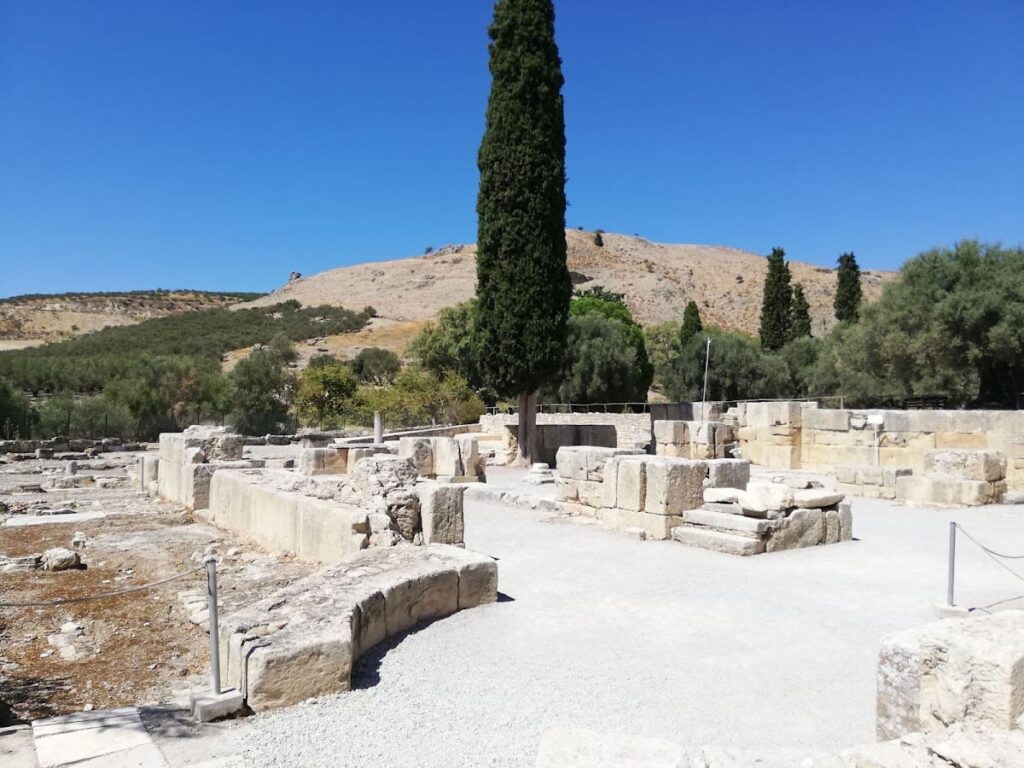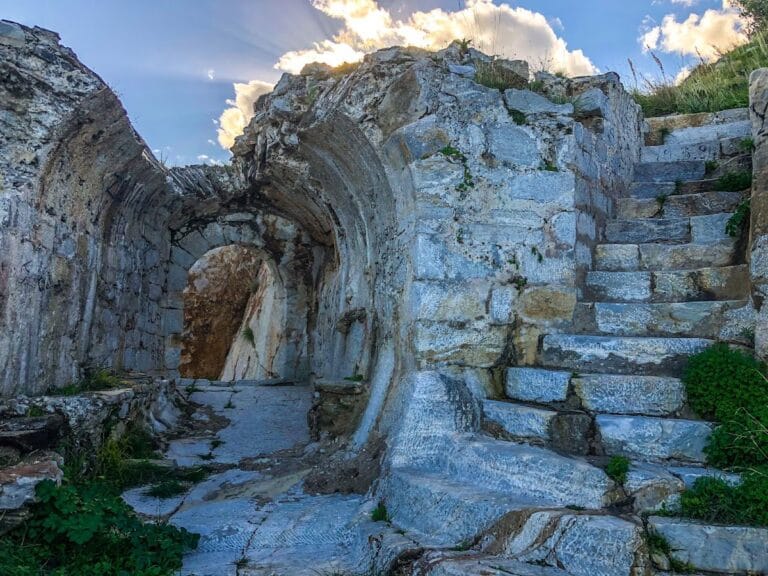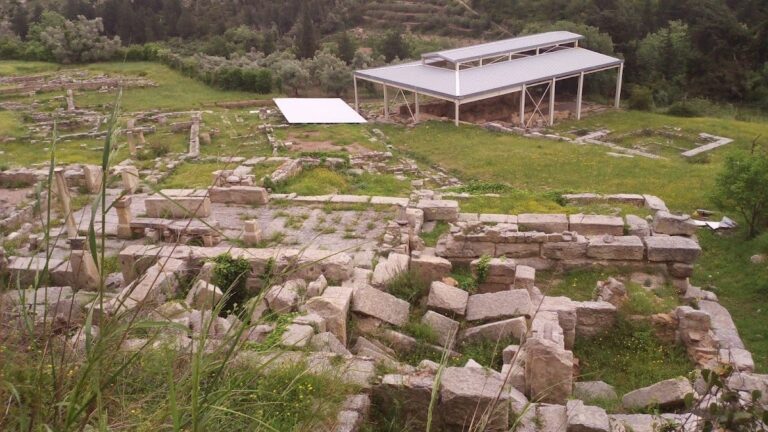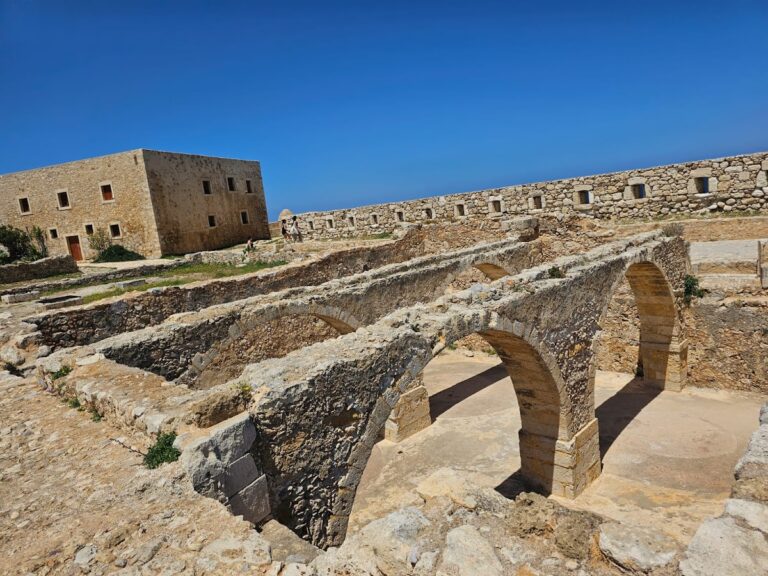Gortyn: An Ancient City in Crete with Rich Historical and Archaeological Heritage
Visitor Information
Google Rating: 4.1
Popularity: Medium
Google Maps: View on Google Maps
Country: Greece
Civilization: Byzantine, Greek, Roman
Remains: City
History
Gortyn is located in south-central Crete, within the fertile Messara valley near the Libyan Sea. Human presence at the site dates back to the Neolithic era around 7000 BC. The city developed through the Minoan period, which lasted from approximately 2600 to 1100 BC, and continued into the Early Iron Age around 1100 BC. These early phases laid the foundation for Gortyn’s later prominence.
By the Hellenistic period, Gortyn had become a leading city-state on Crete. It controlled the Messara valley and expanded its influence after the destruction of the nearby city of Phaistos in the 2nd century BC. This era marked Gortyn’s rise as a regional power within Crete.
In 68 BC, Gortyn allied with Rome during the Roman conquest of Crete. This alliance spared the city from destruction, allowing it to flourish under Roman rule. Gortyn became the capital of the Roman province Creta et Cyrenaica. From the 4th century AD, it served as the capital of the separate province of Crete, maintaining its administrative importance.
Christianity reached Gortyn by the 6th century AD, as evidenced by the construction of one of Crete’s earliest Christian churches, the cathedral dedicated to St. Titus, the island’s first bishop. This reflects the city’s religious transformation during late antiquity.
Around AD 828, Gortyn was destroyed by invading Arab forces who established a state on Crete. This event marked the end of the city’s long history as a major urban center.
Gortyn is also linked to the myth of Europa, a figure from Greek mythology who was abducted by Zeus in the form of a bull. Archaeological finds, including a large statue of Europa on a bull and coins depicting her image, indicate her veneration in the city.
Remains
The archaeological site of Gortyn reveals a complex urban layout with structures from various periods. The earliest settlement includes a citadel dating to around 1050 BC, which collapsed in the 7th century BC and was later enclosed by a defensive wall. On the citadel hill, a 7th-century BC temple was uncovered, containing sculptures in the Daedalic style, clay figurines, and pottery decorated in black and red figure techniques.
South of the citadel, graves from the geometric period were found, indicating continued use of the area for burial practices. The lower town features the Agora, or marketplace, and a temple dedicated to Pythian Apollo located about 600 meters away. Near Prophet Elias hill, remains of a sanctuary honoring the goddess Demeter have been excavated.
Roman-era constructions are prominent, including the Praetorium, built in the 1st century AD as the governor’s residence and modified over the next eight centuries. Between the Agora and the temple of Apollo lie Roman baths, a temple to Apollo, an honorary arch, and a temple dedicated to Egyptian deities Isis, Serapis, and Anubis, reflecting religious diversity.
The Roman theater, dating to the 2nd century AD, retains its half-circular orchestra and two entrances, with its outline still visible. Nearby, the Gortyn Code inscriptions are carved on large stone slabs in the Dorian dialect. These legal texts, dating to the 5th century BC, were reused in the Roman Odeon, a 1st-century AD building from Emperor Trajan’s reign.
The early Christian basilica of St. Titus, constructed in the 6th to 7th century AD, has a cruciform plan with a dome supported by four pillars. Built from large, carefully cut stones, only the Holy Bema (altar area) and pastophoria (side chambers) remain at their original height. Additionally, a 5-aisled basilica from the 4th to 5th century AD, possibly the original church of St. Titus, has been excavated.
Other notable finds include ancient theaters, fountains, and various sculptures. A colossal statue of Europa riding a bull was discovered at the amphitheater and is now housed in the British Museum. Numerous coins depicting Europa were also found, underscoring her importance in local worship.










